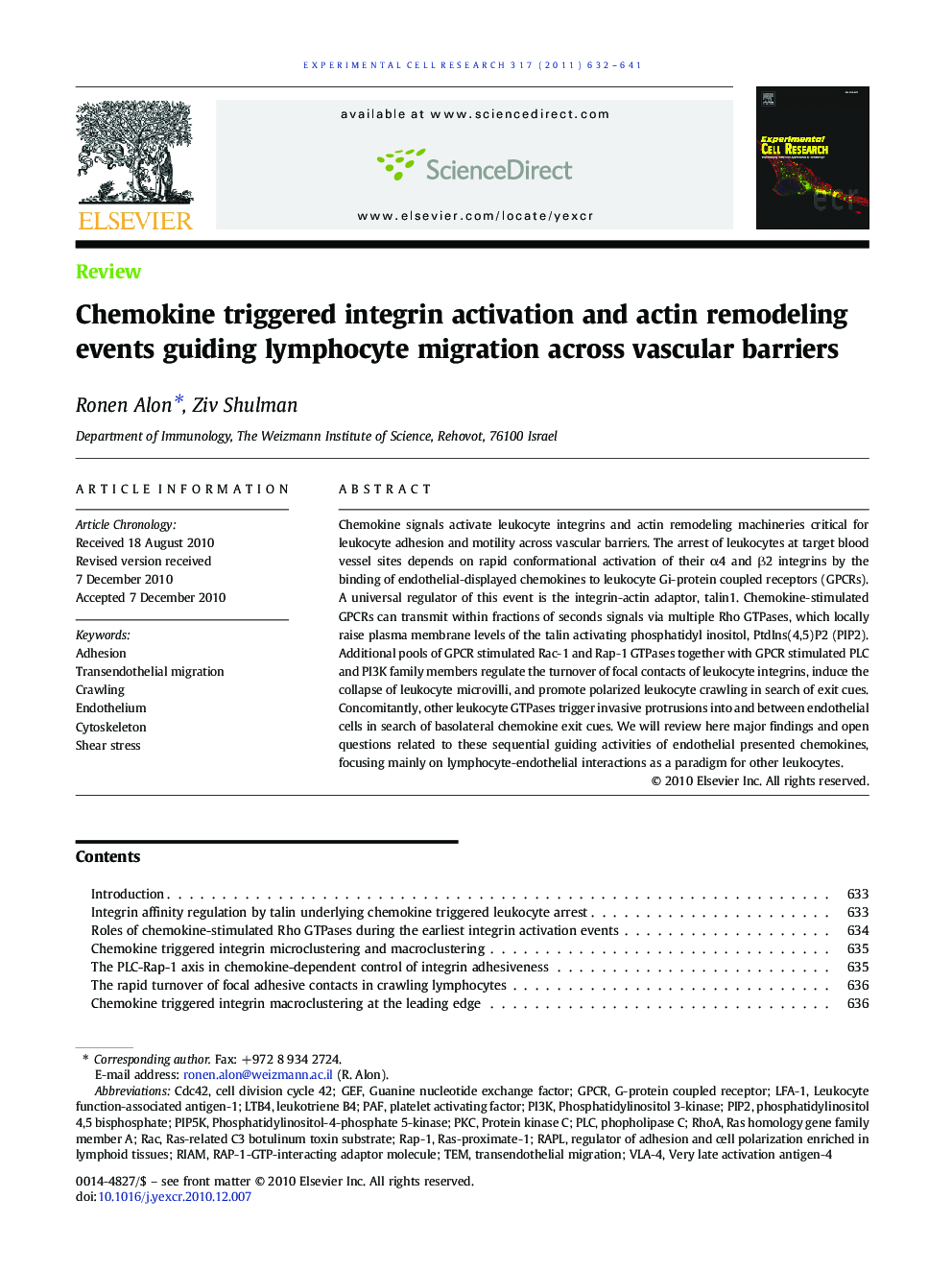| Article ID | Journal | Published Year | Pages | File Type |
|---|---|---|---|---|
| 10904631 | Experimental Cell Research | 2011 | 10 Pages |
Abstract
Chemokine signals activate leukocyte integrins and actin remodeling machineries critical for leukocyte adhesion and motility across vascular barriers. The arrest of leukocytes at target blood vessel sites depends on rapid conformational activation of their α4 and β2 integrins by the binding of endothelial-displayed chemokines to leukocyte Gi-protein coupled receptors (GPCRs). A universal regulator of this event is the integrin-actin adaptor, talin1. Chemokine-stimulated GPCRs can transmit within fractions of seconds signals via multiple Rho GTPases, which locally raise plasma membrane levels of the talin activating phosphatidyl inositol, PtdIns(4,5)P2 (PIP2). Additional pools of GPCR stimulated Rac-1 and Rap-1 GTPases together with GPCR stimulated PLC and PI3K family members regulate the turnover of focal contacts of leukocyte integrins, induce the collapse of leukocyte microvilli, and promote polarized leukocyte crawling in search of exit cues. Concomitantly, other leukocyte GTPases trigger invasive protrusions into and between endothelial cells in search of basolateral chemokine exit cues. We will review here major findings and open questions related to these sequential guiding activities of endothelial presented chemokines, focusing mainly on lymphocyte-endothelial interactions as a paradigm for other leukocytes.
Keywords
RACRAPLPIP5KPIP2RAP-1GEFCDC42LTB4LFA-1PI3KPKCRhoAGPCRPLCG-protein coupled receptorleukocyte function-associated antigen-1RIAMcell division cycle 42Platelet activating factorguanine nucleotide exchange factorPhosphatidylinositol 3-kinasephosphatidylinositol-4-phosphate 5-kinasePhosphatidylinositol 4,5 bisphosphateLeukotriene B4PAFRAS-related C3 botulinum toxin substrateProtein kinase C
Related Topics
Life Sciences
Biochemistry, Genetics and Molecular Biology
Cancer Research
Authors
Ronen Alon, Ziv Shulman,
